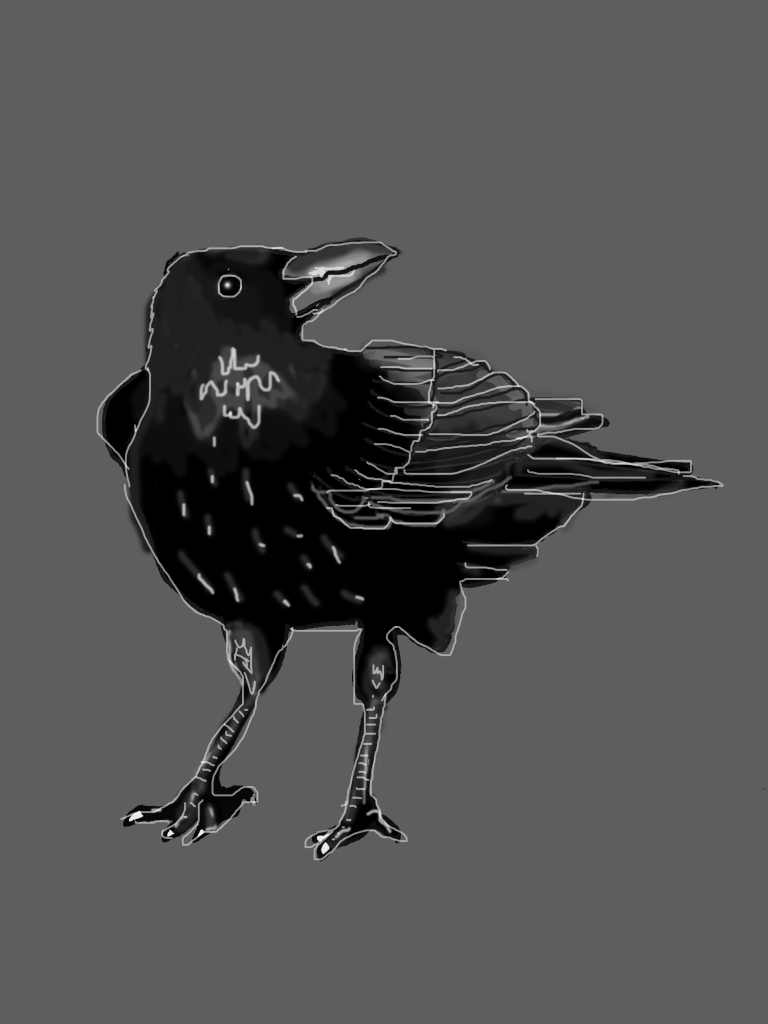
“CAWWW”: the shrill call rings out over a desolate landscape, accompanied by eerie music, and the main character shakily walks into frame. “Oh no, who’s going to die?” we think. The crow is a symbol deeply ingrained into the human psyche. Our minds might conjure up sinister cinematic moments of mystery, but the crow has had a presence in our collective imaginations since the origin of human culture. Symbolic of death, bad omens and the unknown, they also evoke wisdom, magic and the divine. Most every culture has mythology surrounding crows and ravens. So, what calls for this mystical regard? What is it about crows that fascinate us so?
In Norse mythology, the god Odin had a pair of crows called “Memory” and “Thought” that would fly around the world collecting information for Odin. This is more fact than fiction, as crows possess a hyper-intelligence comparable to that of humans. Crows share the three keystone traits that have lead both of our species to worldwide success: intelligence, adaptability and sociability.
Just by the way the crow moves its black pearly eyes, cocks its head, and flies off, sending a caw in the direction of its comrades, it’s clear those wheels are turning. By far the most intelligent bird species, crows have a similar body-to-brain ratio as many apes. One study found that a crow could distinguish one human face from a crowd, encode it, then recall the same face two years later. Not only that, but if a crow perceives a face as a threat, it can effectively communicate the details of that person’s face to the rest of the murder (a group of crows) so that they might avoid it. Be careful in giving these perceptible creatures the side-eye, because crows never forget a face.
Enhanced by their unique intelligence, is their ability to adapt. One is hard pressed to find a species more prolific than these sleek beasts. They can be found worldwide, from seacoasts, to city streets. They’ve evolved to be fond of similar environments as us, such as open spaces surrounded by trees. Wicked problem-solving skills, including the ability to use tools, have allowed crows to be one of the few species that have adapted to urban environments. Among those is the rare ability to use tools. Urban crows are also able to memorize the exact route of garbage trucks in order to come away with the most efficient and bountiful haul.
Being highly social is a hallmark of intelligent species. Crows form complex relationships and hierarchies within their murders, communicating sophisticated messages. Many crows will pair off to raise their young, forming a nuclear family unit. These families will usually spend over a year raising their young, which is much longer than most bird species. When a crow dies, the entire murder surrounds the deceased, holding what appears to be a funeral and trying to find out how their companion died. If a crow is killed in a particular place, then the following year, the murder will reroute their entire migratory pattern to avoid the spot. Again, don’t anger these birds, or the whole crow population of Portland might be after you. Crows talk.
It’s still a chilling scene being among a murder of crows. They exhibit so many characteristics similar to ourselves. Their intense intelligence has allowed them to adapt to nearly any environment worldwide. They organize themselves in a similar way, with family units connected to a wider community. By looking at these traits, one would think crows might elicit the kind of warm familiarity we feel toward our fellow mammals. Yet, I believe its because these traits are found in the stark, foreign and vaguely sinister bodies of the crow, that our imaginations are aroused so.

































